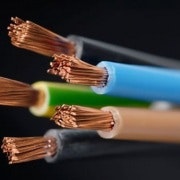Breaking down 10G Copper connectivity adoption barriers
In the fast-paced digital world we live in, 10GBase-T aka 10Gig copper, has experienced a slow but progressive uptake. 2002 saw large enterprises eagerly deploy 10GbE fibre into their data centres when the standard was ratified.
Fast-forward to 2006 when the copper variant was ratified, smaller organisations were still hesitant to adopt the technology due to prohibitive costs and the fact that data centres were not a key function of the business.
The turning point for 10GbE connectivity came in 2012 when wide scale deployment began to roll out, almost six years after the standard was ratified. So, what took so long? What’s different now and what brought a change in expectations?
Previously, the predominant way to support high-speed access to the network through 10G connectivity involved costly fibre technology as well as virtualized server, storage and data centre environments.
Depending on your perspective, a number of elements have been known to stall wide-spread deployment of 10G connectivity. Among them are high power consumption, latency and pricing that positioned 10Gbase-T as a cumbersome technology.
This is now set to change. Without doubt, 2014 is the year for 10GbE.
IT trends such as BYOD and the Internet of Things will influence the level of traffic on company networks and organisations of all sizes will be looking to upgrade their infrastructure. Furthermore, the next generation of workers, dubbed ‘Generation WiFi’, will also play a large role in the new level of bandwidth needed. This group has only experienced an Internet enabled world and relies heavily on technology to be productive.
Innovative technology was heavily involved in their education and this generation will demand this when they enter the workforce. To ensure new employees perform to the best of their ability, organisations need to implement a robust network to support growing traffic.
What does this mean for Australian organisations?
Until 2012, you could get a 10GbE capable fixed configuration switch in any flavour, as long as it was fully managed. This was ideal for large enterprise IT budgets, but not helpful for the SMB suffering from performance issues and far smaller IT budget flexibility.
Competitive solutions are now readily available for smaller organisations that want to introduce 10GbE switching. Such solutions are allowing high network speeds to be achieved at very reasonable prices, creating a more level playing field as enterprise level IT is now present in smaller businesses.
This also allows 10GbE to step outside of the data centre and into the arms of SMBs, creating new and exciting opportunities.
The remainder of 2014 will see more organisations start conversations on 10GbE. Servers, storage and switching at 10GbE speeds will be the next wave of networking as organisations both large and small saturate fast connectivity to the desktop.
As user demand increases, IT departments will be forced to listen, further increasing 10Gbe adoption rates. 2014 is the time to implement this technology and ride the next wave of networking connectivity.
Brad Little is vice president and managing director of NETGEAR ANZ
















